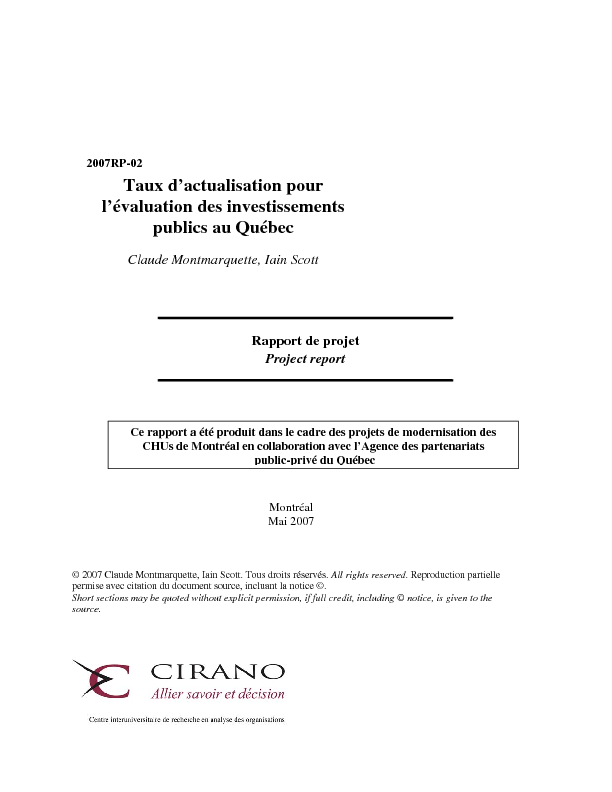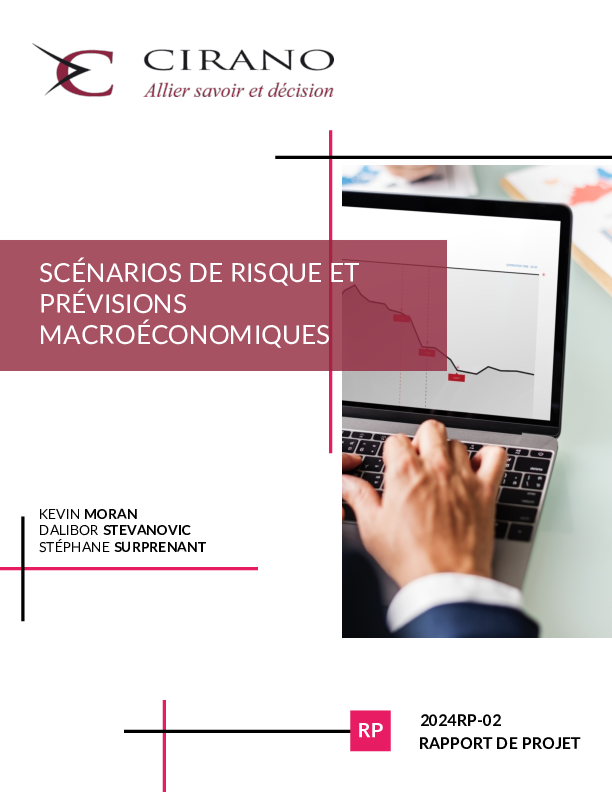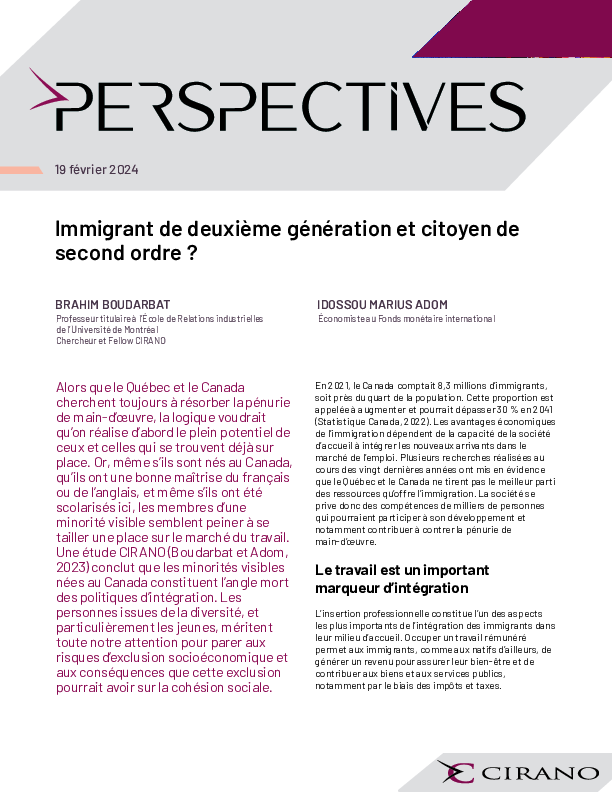Taux d'actualisation pour l'évaluation des investissements publics au Québec
Because of the time value of money (that is, a dollar today can be invested to yield more than a dollar tomorrow), a project's costs and benefits in different periods are not comparable. Therefore, a discount rate that will convert future sums into present values is used in cost-benefit analysis. This rate fundamentally influences the outcome: a rate too high will favour the present over the future and vice-versa. This paper addresses the issue of what the appropriate social discount rate for cost-benefit analysis of public projects should be in Quebec. In practice the Quebec government often uses the public sector's long-term borrowing costs as a proxy for the social discount rate. We find that this is inconsistent with both the scientific literature and international methodology on the subject.
[ - ]
The social discount rate in Quebec:
should be 8% in nominal terms, whereas the real rate should be 6%.
Should be calculated without a risk premium.
Should apply to all projects, including public private partnerships (PPPs).
Should be revised every five years.




